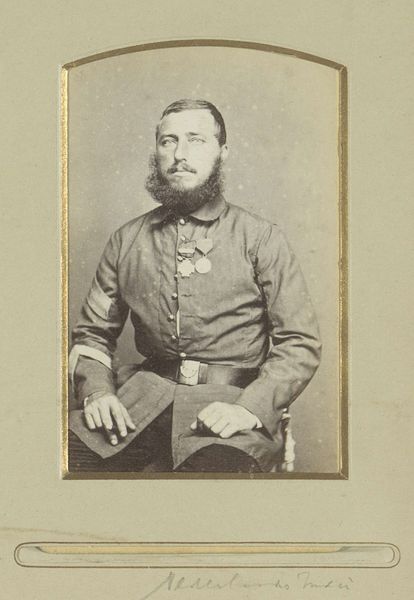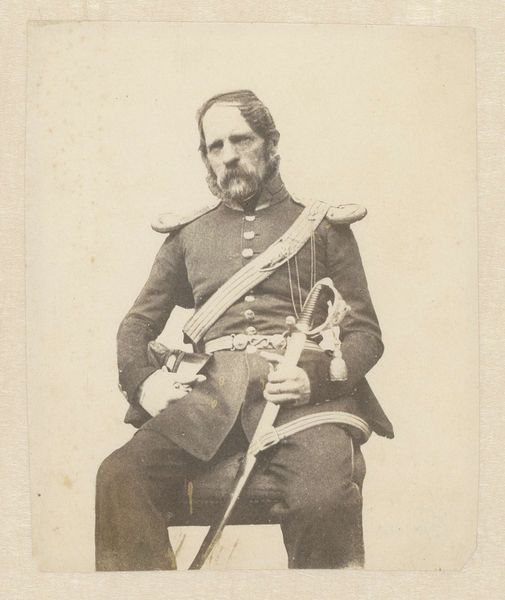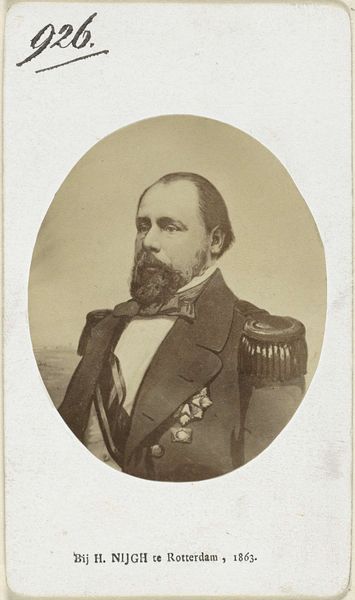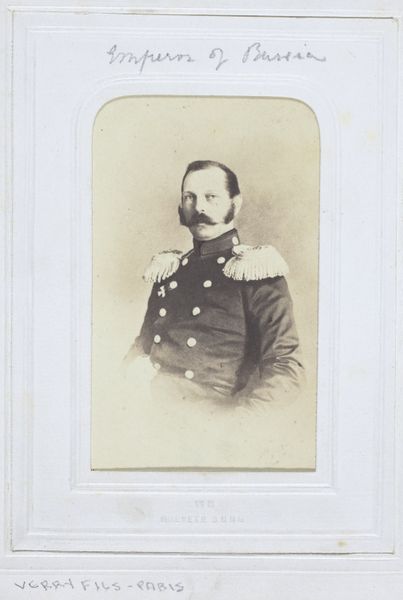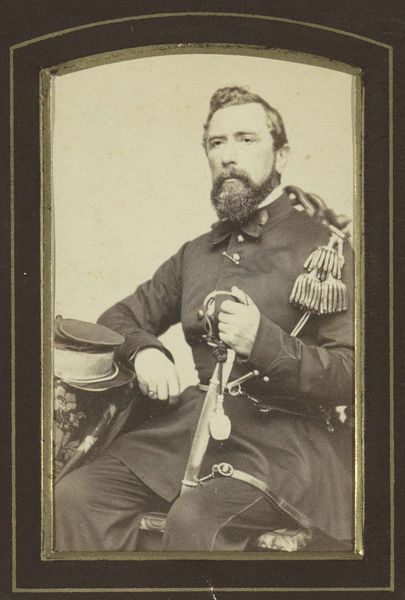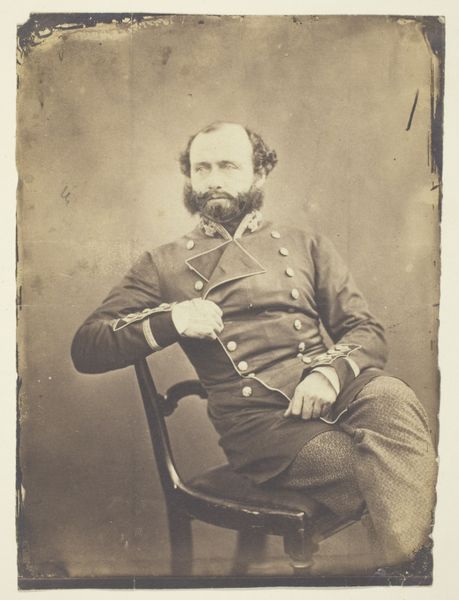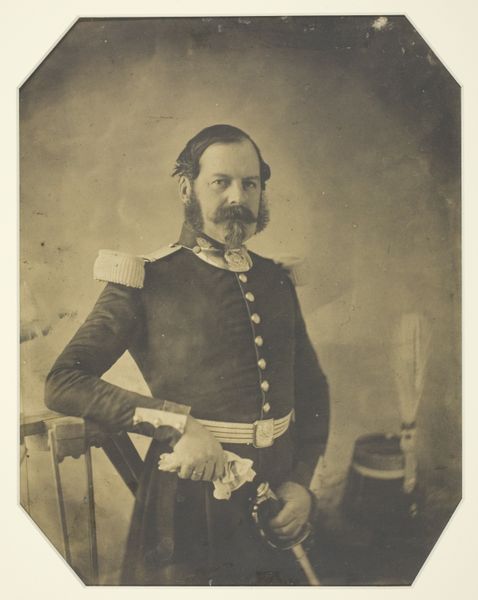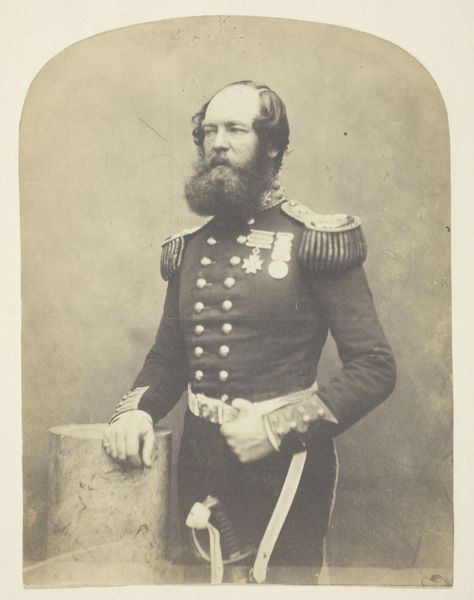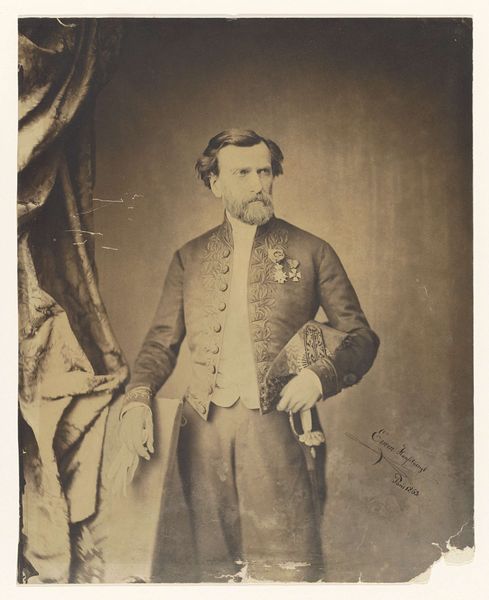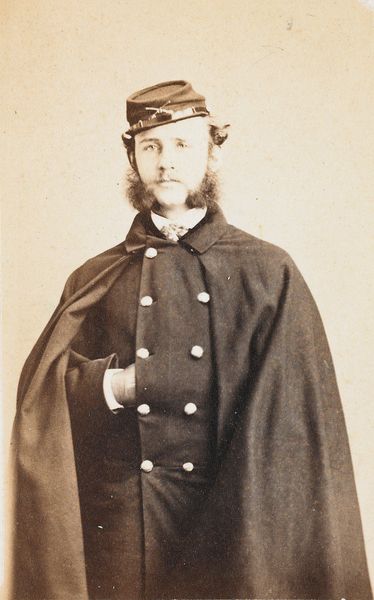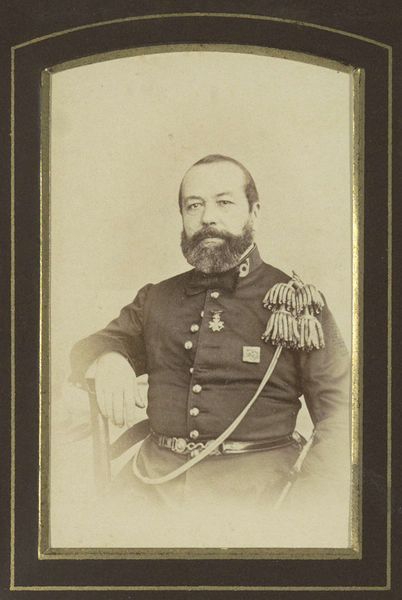
photography, albumen-print
#
portrait
#
photography
#
history-painting
#
albumen-print
Dimensions: image: 20.7 × 14.2 cm (8 1/8 × 5 9/16 in.) mount: 21.8 × 15.9 cm (8 9/16 × 6 1/4 in.)
Copyright: National Gallery of Art: CC0 1.0
Editor: This is "Colonel John T. Croxton," taken around 1861 by Mathew Brady. It's an albumen print, a very early photographic process. It's quite a stern image, and the subject seems very self-aware. What do you see in this piece? Curator: I see a meticulously constructed image intended to project power and legitimacy at a very specific historical moment. Think about the American Civil War, just beginning, and the public's hunger for heroes, for visual reassurance. Brady understood the power of photography to shape public opinion. Editor: So it's not just a portrait, but also a piece of propaganda? Curator: Certainly, we can interpret it through that lens. Consider the sharp detail, achieved through the albumen print process. The crispness of the uniform, every button precisely rendered, reinforces authority. Then consider the pose—controlled, dignified. He's literally composed for the public gaze. It’s meant to convey an image of strength and unwavering commitment, right? Do you notice any other elements in the composition? Editor: Yes, the way he is positioned slightly above the viewer because he is seated on a platform and his stern expression is what first captures attention. Did people view photos then in the same way we view social media posts today? Curator: In a sense, yes. Photography was rapidly becoming democratized. Studios like Brady’s brought portraiture to a wider audience, shaping perceptions of political and military figures, crafting national narratives during a period of intense social and political upheaval. It's crucial to understand how these images functioned within that historical context, reinforcing certain ideologies. Editor: It's interesting to think about how photography can be both a personal record and a tool for shaping public memory. Thank you, I see the work so much more clearly now. Curator: It highlights how even seemingly straightforward portraits can be rich with historical meaning, revealing much about the societies that create and consume them. I found your insights refreshing as well.
Comments
No comments
Be the first to comment and join the conversation on the ultimate creative platform.
